Hands-on Galaxy Tab S6 Review: This iPad Pro Alternative Has a Touchpad
Is there room for a high-end Android tablet? Samsung seems to think so with its just-announced Galaxy Tab S6, a clever productivity-minded 10.5-inch slate that's positioned as the alternative to the iPad Pro.
I got my hands on the Tab S6 at a private media event held by Samsung, where I got to see why the Android crowd should be excited that this slate is coming soon.
Galaxy Tab S6 price and availability
The Galaxy Tab S6 will start at $649, and become available for pre-order on Aug. 23. Tablets will ship to customers on Sept. 6. You'll notice two different RAM and Storage options: you can upgrade the memory and storage to the 8GB, 256GB config for an extra $80.
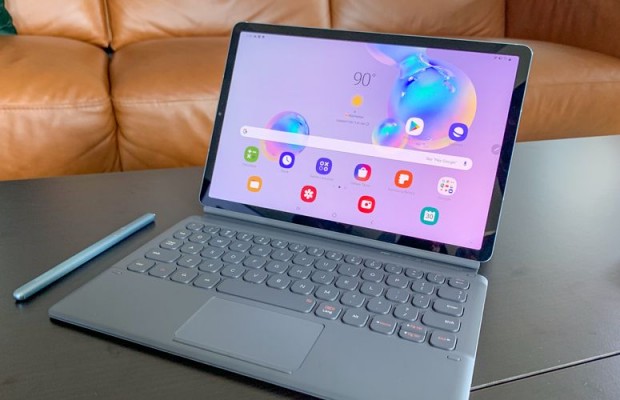
Samsung Galaxy Tab S6 specs
| Row 0 - Cell 0 | Samsung Galaxy Tab S6 |
| Starting Price | $649 |
| Display | 10.5-inch Super AMOLED, 2560 x 1600 pixels |
| CPU | Qualcomm 855 processor |
| RAM | 6GB | 8GB |
| Storage | 128GB | 256GB |
| Battery Life | Rated for 15 hours |
| Size | 9.6 x 6.3 x 0.2 inches |
| Weight | 14.8 ounces |
Galaxy Tab S6 Design: Neat little changes to the established format (but lacking one option)
Holding the Tab S6 in my hands, I thought to myself "a tablet is a tablet is a tablet." Just like the 11-inch iPad Pro (which is $150 more), the Tab S6 has thinner bezels than Amazon's cheaper Fire tablets. The slate packs a USB-C port on its bottom edge and comes in some pretty neat colors: Mountain Gray, Cloud Blue and Rose Blush (I prefer the latter two).
Stay in the know with Laptop Mag
Get our in-depth reviews, helpful tips, great deals, and the biggest news stories delivered to your inbox.
The big strength of the Tab S6 is in its keyboard and kickstand combo, which costs an extra $179. But even though that's an annoying price bump (one that is all too familiar thanks to the Surface Pro and similar tablets), Samsung's nailed a lot of good here.
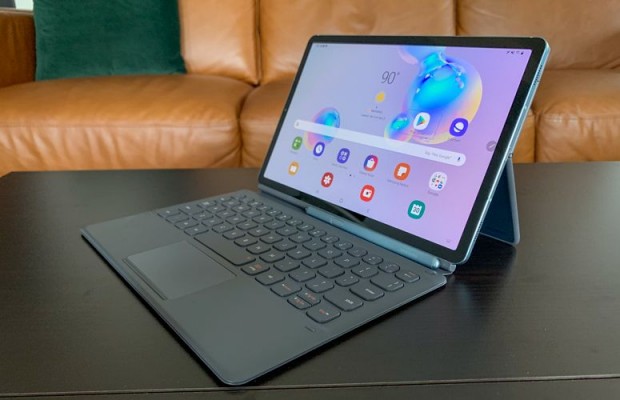
The keyboard and kickstand back are a two-piece combo, so you don't always need to use the former to gain the benefits of the latter — such as the next time you fly coach and just want that easel stand because you've got barely any room. Also, unlike the iPad Pro, the Tab S6's keyboard actually includes a touchpad, so you don't need to also throw a mouse in your bag to get a traditional work environment.
What's missing, though, is a larger format Galaxy Tab S4, as this 10.5-inch tablet is already smaller than the 11-inch iPad Pro. As someone who prefers the 12.9-inch iPad Pro, the Tab S4 feels a little too slight. I gather that those with smaller bags or desks, though, may disagree.
Galaxy Tab S6 Display: Everything you expect (plus a neat surprise)
The Tab S4's 10.5-inch Super AMOLED screen looked pretty bright and vibrant as I navigated Netflix, and it offers a sharp WQXGA resolution at 2560 x 1600 pixels.
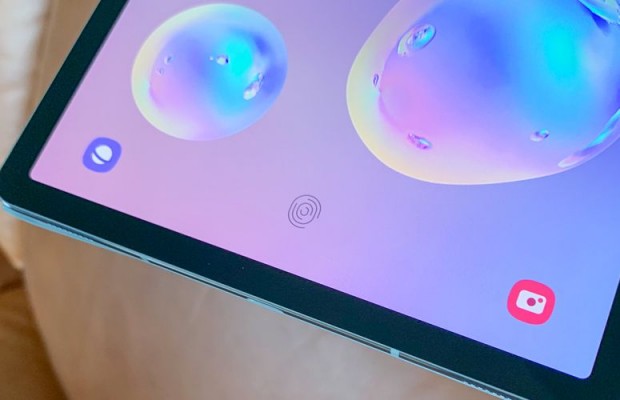
The bigger news is that it even offers an in-screen fingerprint reader, though Samsung's using an optical sensor, and not the ultrasonic sensor in the Galaxy S10. While that will be enough for most home users, conventional wisdom suggests this will be a downgrade, moving away from the three-dimensional fingerprint impression the ultrasonic reader gets to a flatter, image-based scan that the optical one reads.
Galaxy Tab S6 DeX Mode and S Pen: little improvements
DeX mode is still around, as the company demoed for me with a Tab S6 connected to the Samsung Space Monitor via a USB-C to HDMI adapter. The important update here, though, is that the Tab S6 packs a Qualcomm Snapdragon 855, which will pack a lot more punch than the Snapdragon 835 chip in its predecessor, the Galaxy Tab S4.
DeX mode appears to be a major benefactor of this upgrade, as I saw windows and apps on both screens of the docked Tab S6 move smoothly as I jumped between apps. Moving between Android and DeX mode is also easier than ever, as Samsung added a keyboard shortcut (fn + |) to jump between the traditional interface and its windowed mode. And for as much as iPadOS will make the iPad more capable at multitasking, I have to give Samsung credit for giving a true windowed mode for users looking for it.
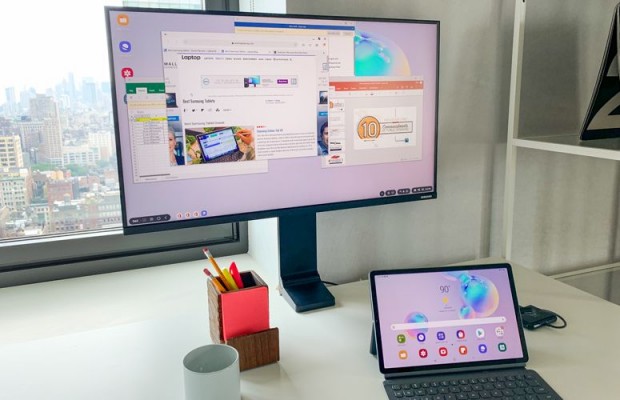
There's also going to be an integration with Discord, to make interacting with the popular gaming chat app more seamless, but Samsung didn't show it at the event.
Of course this wouldn't be one of Samsung's more expensive devices if it didn't pack the S Pen, which brings us to that indentation on the back of the Tab S6, where the stylus magnetically attaches and charges. This design decision is a lot like Apple's move to attach the new iPad Pro's Pencil to its top edge, and it makes more sense when you see that Samsung's cases for the tablet have a little hump that covers the pen to help it stay attached in transit. The Tab S4 had a much less elegant solution, a loop on the side of the keyboard, which was prone to having your S Pen get caught on something when you're putting it in a bag.
Samsung's also adding in Air Action gestures, to make the S Pen more like a remote control for the tablet. For example, with the tablet's camera open, clicking the S Pen's button takes photos and when you hold down the clicker and whip the stylus up and down, it switches between front and rear cameras.
Galaxy Tab S6 Cameras: Yes, cameras on a tablet
Speaking of cameras, Samsung is continuing to emphasize photography on the Tab S6, despite what we might think about how one looks when snapping photos on a tablet. The Tab S6's biggest camera feature is an Ultra Wide lens mode, which offers a 123-degree-wide field of view, which the company says is comparable to that of a single human eye.
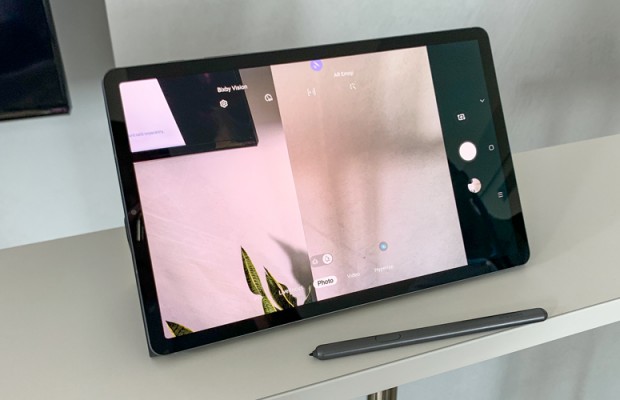
An on-board Neural Processing Unit from Samsung will automatically adjust settings to match your scene.
Samsuung Galaxy Tab S6 Outlook
For as much as I like the Tab S6, we have to talk about how the market for a high-priced Android (or Android-adjacent) tablet is shrinking. Amazon owns most of the market with its cheap Fire tablets, Google has stopped making its own tablets and detachables after the Pixel Slate sank, and Huawei (whose future in the west still feels questionable) isn't punching above the $500 price.
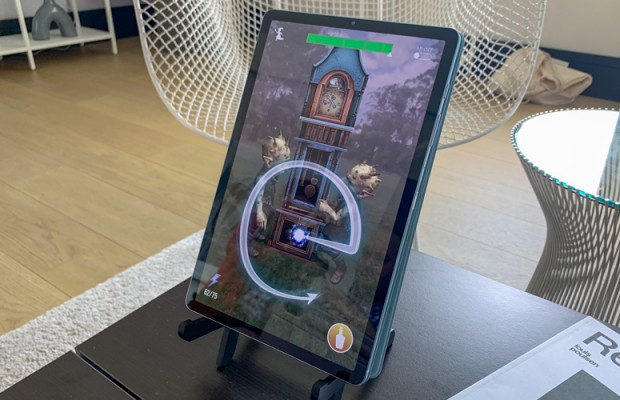
That gives Samsung full control over this end of the pool. Time will tell, though, if it's a shallow or deep section, with enough support to continue. Samsung rates the slate for a massive 15 hours of battery life, one of the many things we look forward to putting to the test in an in-depth review.
